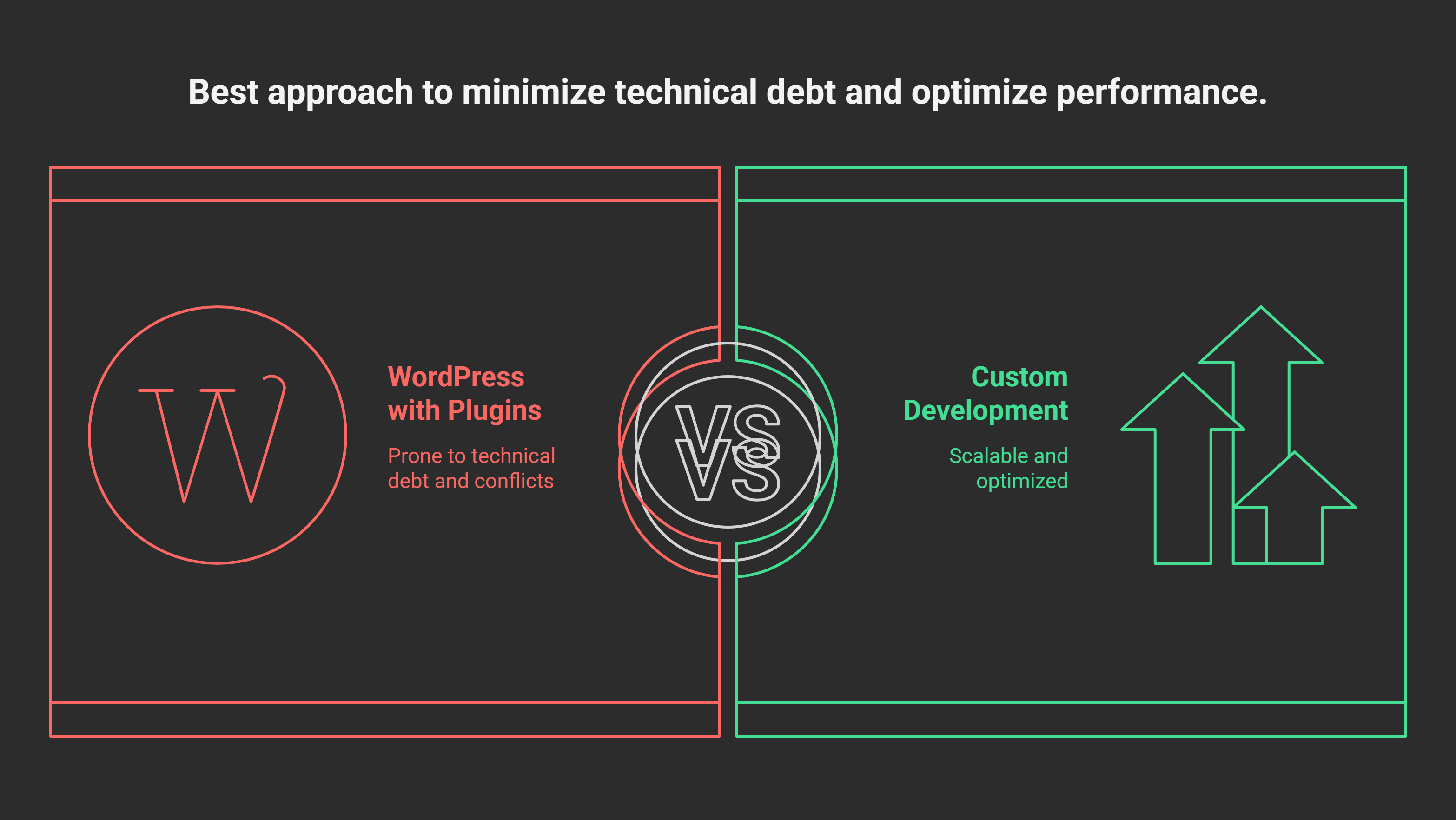Why Most Businesses Lose Customers—and How to Take Back Control with Blogging in E-commerce
Do you ever feel like potential customers slip away before they buy? Many businesses face this exact problem, and it’s costing them sales. The issue? A lack of control over the customer journey. Today’s buyers aren’t just purchasing on impulse. They research, compare, and explore their options before making a decision. If you’re not guiding them every step of the way, you’re losing them to competitors.
Businesses are losing customers because they’re not meeting them where they are in the buying process. Most companies either focus too much on their e-commerce platform or their content marketing without aligning the two. What’s the result? Disengaged prospects who don’t convert into paying customers.
Here’s what’s happening:
1. E-commerce only: Many businesses rely solely on their online store, expecting customers to browse and buy. But most visitors leave because they aren’t properly educated or convinced to make a purchase. For example, an e-commerce-only strategy lacks educational elements that nurture customers, leaving gaps in the buying journey.
Solution: Add Educational Content with Direct Links
This snippet creates a direct connection between education and the product, allowing users to gain insights while staying on your platform.
2. Content without a sales path: Some companies produce blog content, but it doesn’t connect to their products or services. This leaves customers informed but not ready to buy. For instance, a blog titled “The Benefits of Sustainable Living” may generate traffic but fail to lead readers to purchase eco-friendly products.
Solution: Integrate Products Directly into Content
This method ties the content’s message directly to the product, offering a natural transition from awareness to consideration.
3. Disjointed experience: Content and e-commerce often exist on separate platforms, creating a disconnected experience. This lack of cohesion makes it difficult for customers to transition from reading to buying.
Solution: Use APIs to Merge Blog and E-commerce Platforms
This code dynamically adds product links to blog posts, ensuring a seamless transition between educational content and e-commerce pages.
These gaps in the customer journey lead to lost sales and missed opportunities.
Businesses attempt to solve this problem by improving their e-commerce sites, hoping better product descriptions or flashier designs will convert more visitors. Others pump out blog posts, hoping that more content will eventually lead to sales. But here’s where they fall short:
a). E-commerce tweaks aren’t enough: Better images or faster loading times might keep visitors on your site a bit longer, but they won’t buy if they don’t understand why they need your product.
Solution: Add Dynamic FAQs to Address Concerns
This creates a more engaging and informative shopping experience, helping visitors make purchase decisions.
b). Content without conversion goals: Blog posts may bring in traffic, but without clear calls-to-action (CTAs) or paths leading to your e-commerce pages, you’re not converting readers into buyers.
Solution: Use Strong CTAs in Blog Posts
The “Shop Now” button ensures readers have a clear path to purchase.
The perfect solution is simple: integrate your blog with your e-commerce strategy. This creates a seamless experience where customers can move easily from reading your content to purchasing your products.
Here’s what that looks like:
1. Educational content tied to your products: Your blog should solve customer pain points while naturally introducing your product as the solution. For example, a blog post about “How to Choose the Right Running Shoes” should lead directly to your shoe products.
This blog post ties directly to the product, leading readers to take action.
2. Clear CTAs at every stage: Each blog post should guide the reader toward taking the next step, whether that’s signing up for a newsletter, downloading a guide, or heading straight to a product page.
By placing CTAs strategically, you guide customers through the buying process.
3. Smooth transitions between content and product pages: Don’t let customers feel like they’re jumping from one site to another. Make the transition from your blog to your store seamless with integrated design and relevant links.
Consistent design ensures users feel they’re on the same platform, creating trust and reducing friction.
This approach works because it aligns with how modern buyers make decisions. According to HubSpot, businesses that blog see 67% more leads than those that don’t. Another study by Demand Metric shows that content marketing costs 62% less than traditional marketing but generates 3x as many leads.
Forbes reports that companies using integrated content strategies see a 35% increase in conversions. The evidence is clear: when you combine educational content with an easy path to purchase, sales go up.

Your blog should work as a 24/7 guide, helping customers move through the buying process:
- Awareness: At this stage, prospects are looking for information. Write blog posts that address their problems and introduce your product as a solution. For example, a title like “Top 5 Reasons Your Phone Keeps Overheating and How to Fix It” could link to your phone accessories that prevent overheating.
- Consideration: Now, they’re weighing their options. Use comparison posts, case studies, and detailed guides to help them make informed decisions. For example, “Should You Choose X or Y for Your Home Office Setup?” with links to both products.
- Decision: This is where you seal the deal. Include customer testimonials, product demonstrations, and offers in your blog posts to push the prospect toward purchasing.
You absolutely can, and more importantly, you should. Combining blog content with an e-commerce store allows you to capture leads through education and guide them toward making a purchase. It’s the perfect one-two punch for turning traffic into revenue.
E-commerce platforms give you the ability to sell, but they don’t necessarily help you convert visitors. Without the trust-building power of a blog, customers often abandon your site before they even consider buying. That’s why blogging is so crucial—it builds credibility, educates your audience, and nurtures leads over time.
- Boosted Organic Traffic: Blogs improve your search engine rankings, which means more potential customers visiting your site. According to Search Engine Journal, companies with blogs see 434% more indexed pages on Google, leading to more traffic and more sales.
- Positioning as an Expert: Regular blogging shows you know your industry. Customers trust brands that offer valuable insights, making it easier for them to justify their purchase decisions.
- Lead Nurturing: Blogs allow you to engage potential buyers at different stages of the funnel. You can capture their interest with informative content and nurture them with CTAs that lead to product pages, newsletter sign-ups, or exclusive offers.
Many successful businesses do just that. You can place product links directly within blog posts, making it easy for readers to transition from learning about a problem to purchasing the solution.
If you’re not integrating your blog with your e-commerce strategy, you’re missing out on a massive opportunity to drive more traffic, increase conversions, and build stronger relationships with your customers. By combining content that educates with an easy path to purchase, you can take full control of your sales funnel—from the moment a prospect first visits your site to the moment they hit “buy.”
Start creating content that converts. Your business—and your bottom line—will thank you.
Meet Dennis, a seasoned software engineer with 11 years of experience transforming ideas into digital reality. He has successfully guided countless projects from concept to deployment, bringing innovative solutions to life. With a passion for crafting exceptional software, Dennis has helped countless clients achieve their goals.
Click here to learn more
Popular Posts
- How Can Strategic Software Solutions Propel Your Business to the Next Level?
- What is the Key to Startup Success?
- Why Do Some Products Soar While Others Flounder?
- Why Is Consistent Blogging Critical for Your Go-To-Market Strategy?
- Why Do Some Products Stick While Others Don't?
- The Ultimate Solution for Faster, Scalable, and Customizable Web Design Without the CSS Headaches
- Revolutionizing Your Software Experience
- How Can You Overcome Common Pitfalls in Enterprise Application Software Development and Achieve Success?
- Discover the Ultimate Solution to Streamline Your Workflow and Boost Productivity!
- Is Your Startup Idea Worth It? Discover How an MVP Can Save You Time and Money
Ready to take your business to the next level? Let’s make it happen.
Recommended For You

Struggling to Manage Your eCommerce Content Effectively?

Unlock Faster, Safer Websites: Why Businesses Are Choosing Next.js Over WordPress

Why Settle for Less? How Custom Web Development Fuels Your Business Growth

How to Skyrocket Engagement and Sales with Minimal Viable Experience

The Decision Maker’s Playbook to Building Winning Products

De-Risk Your Software Investments: How a Proof of Concept Saves Time, Money, and Headaches

Is WordPress Failing Your Business? Discover Why Next.js and Sanity Are the Future of Content Publishing

